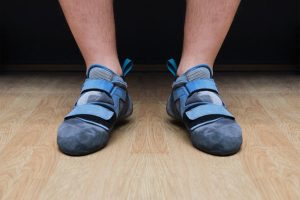Climbing shoes are crucial for any climber looking to maintain grip, comfort, and safety while tackling various climbs. Knowing when to replace them can significantly impact your climbing experience and performance. This guide delves into the specifics of recognizing the right time for a new pair, ensuring you always climb with the best possible gear.
Understanding Climbing Shoe Wear and Tear
Visual Signs of Wear
Inspect your climbing shoes regularly for any obvious signs of wear. These include thinning soles, holes starting to form, especially in the toe area, and the rubber peeling away from the rand or the sole. Visible damage not only affects the shoe's performance but also compromises your safety on the rock or wall.
Sensation and Performance Decline
Performance decline is a key indicator that it's time for new climbing shoes. This can manifest as reduced grip on the rock, difficulty in hooking, or a general feeling of instability. When your movements become less precise or you find yourself slipping more often, consider evaluating your shoes for replacement.
Material Degradation
Climbing shoes can also degrade from the inside out. Sweat and repeated stress can break down the interior materials, leading to a less snug fit. If your shoes have stretched out and no longer provide the tight, supportive fit necessary for effective climbing, it's time to look for a new pair.
When to Replace Climbing Shoes
When to replace climbing shoes is a decision that varies based on frequency of use, climbing style, and the shoe's construction. However, there are general guidelines to follow:
- Frequent climbers (3-4 times per week) should inspect their shoes every 3-6 months.
- Moderate climbers (1-2 times per week) might find their shoes lasting around 9-12 months.
- Occasional climbers (a few times a month) could get 1-2 years of use.

It's not just about the age of the shoes but their condition and how they affect your climbing. Pay attention to the specific signs of wear and how they correspond to your performance and comfort.
Maximizing Climbing Shoe Lifespan
Proper Care
Extend the lifespan of your climbing shoes with proper care. Clean them regularly to remove dirt and grime that can degrade the rubber. Avoid excessive exposure to heat or sunlight, which can accelerate the breakdown of materials.
Resoling
Consider resoling your climbing shoes if the sole is worn but the upper part of the shoe remains in good condition. Resoling can significantly extend the life of your shoes, making it a cost-effective alternative to purchasing a new pair. The cost of resoling varies, but it generally ranges from $35 to $50, offering a substantial saving over buying new shoes.
Choosing the Right Size and Material
Selecting the right size and material for your climbing shoes can also influence their lifespan. Synthetic materials tend to stretch less than leather, potentially offering a more consistent fit over time. However, the right size ensures the shoes do not overstretch and lose their shape quickly, which can accelerate the need for replacement.
Conclusion
Monitoring the condition of your climbing shoes and understanding the signs of wear are essential for maintaining optimal performance. Replacing your climbing shoes at the right time not only enhances your climbing experience but also ensures your safety. With proper care and timely replacement, you can continue to push your limits and enjoy climbing to its fullest.